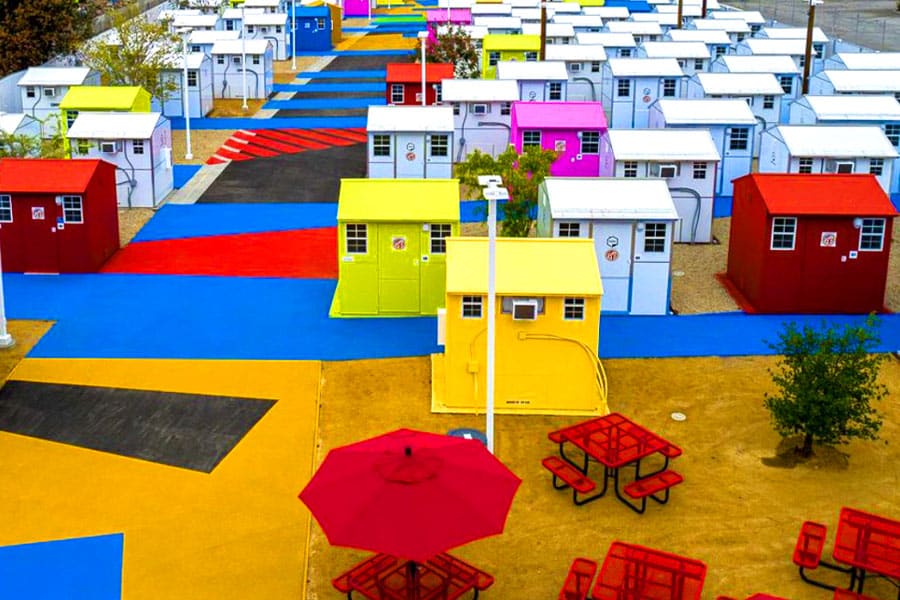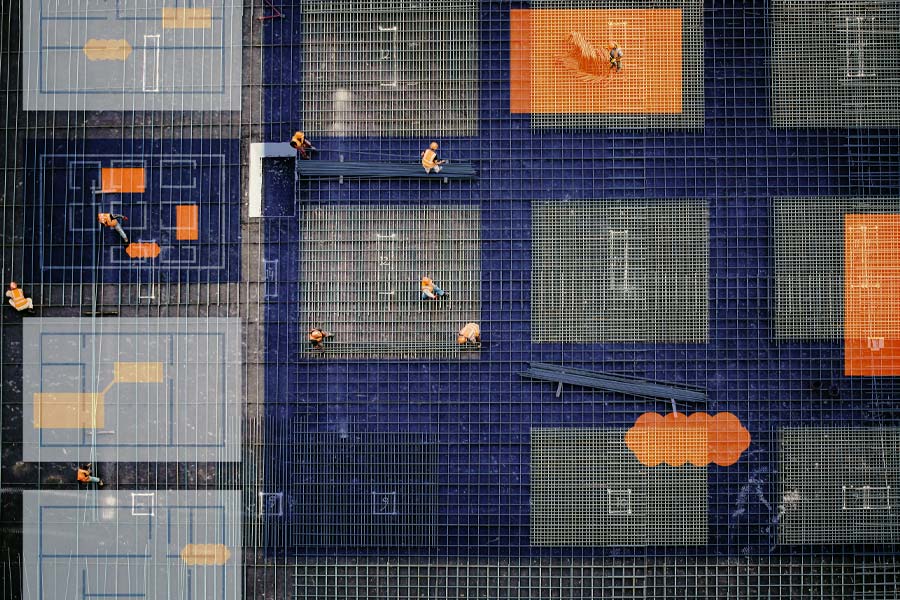As rents rise and real estate prices boom, homelessness continues to be a major issue throughout the United States. The problem is especially pronounced in Los Angeles, the country’s second largest city, which has a homeless population of around 50,000. Communities and legislators in the city and state have been struggling to address the growing crisis.
But for Nerin Kadribegovic of Lehrer Architects, the problem of homelessness has created a unique opportunity for creativity in the face of legislative, logistical and budgetary challenges. Built, the Bluebeam Blog, interviewed Kadribegovic to discuss his history of designing tiny housing for the most vulnerable in Los Angeles and how design can help address an issue facing a growing number of American cities.
A personal connection
Building housing for the people who need it most has long been at the center of Kadribegovic’s design practice. “I was in the first class to graduate from SCI-Arc’s new downtown campus,” he said. “I commuted through Skid Row when the homeless problem was mostly evident there. The experience of living in L.A. and experiencing firsthand the crisis as I rode my bike through Skid Row from 6th Street down to SCI-Arc was pretty shocking.”
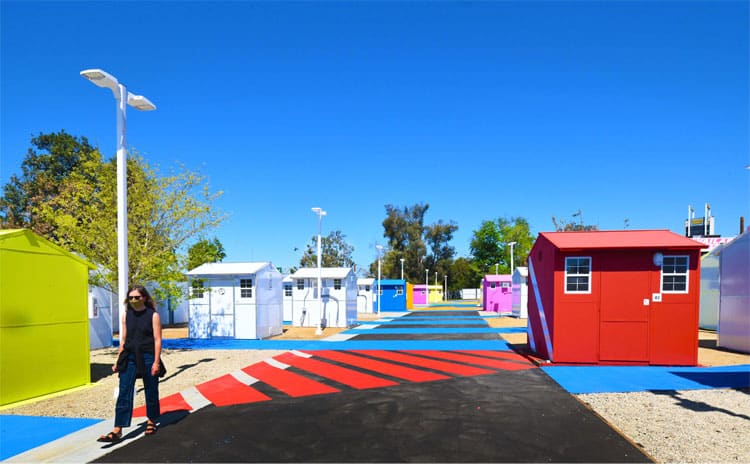
When he met Lehrer Architects founder Michael Lehrer, who was working on a downtown drop-in center for homeless people in the area, the project seemed like a perfect fit. But there’s a more personal connection behind Kadribegovic’s desire to build housing for the people who need it most.
“I came to America as a refugee of the wars in the Balkans in the 1990s,” he said. Kadribegovic and his family spent some time living in a hotel room while they searched for more permanent housing. “My mom and my brother and I lived in a hotel room essentially for over a year,” he said. “We had a little electric hot plate, and my mom would try to make breakfast for us by sitting the hot plate on the TV console. Having a kitchen was a luxury that we could only dream about then.”
These experiences taught him how precarious the illusion of stability could be and created a commitment to building housing solutions—both temporary and permanent—that would feel more like a home. “I think for most people it’s very easy to dismiss homelessness, thinking, ‘Oh, that could never happen to me. I am in charge of my own destiny,’” he said. “Actually, the reality is quite the opposite.”
Making housing happen
As Kadribegovic completes a series of housing projects, including multiple tiny house villages and a design for the California government’s Project Roomkey initiative, the city of Los Angeles has also stepped up its housing game. A federal judge recently ordered the city to build housing for 6,000 people by the end of 2021, resulting in a construction boom and, according to Kadribegovic, considerable logistical challenges.
“It’s challenging because of the mandates that are thrust upon us by the authorities,” he said. “With Project Roomkey, for example, you’re working with such a limited amount of space that every surface, every nook and cranny has to work really hard. So we spent hours trying to imbue every corner with double or triple purpose.”
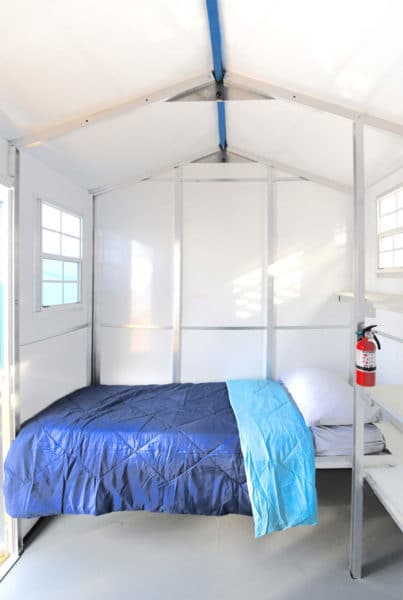
However, when it comes to building housing under the judge’s mandate, “The major issue is the speed at which they need to be delivered,” Kadribegovic said. “Given the mandate, they have to be churning housing units fairly regularly. So when the city gives us the go ahead on a project, we’re tasked with designing and building the entire project in basically 90 days.”
Kadribegovic’s solution to building so quickly starts with coordination. “The city has been very forthcoming and very helpful in the permitting process,” he said. “They have actually created a group at Building and Safety that’s dedicated to housing,” a process which Kadribegovic said streamlines clearances and condenses a permitting process that can take months to as little as a week for a project like the tiny house villages.
Once the village is permitted and essential site preparation has taken place, Kadribegovic works with Washington-based manufacturer Pallet Shelter to install housing in record time.
“Prefabricated components make it possible,” he said. “It’s just delivered and it’s a no-brainer. The houses are delivered on a pallet, on a truck and they come together without any significant tools in an hour or so. The Pallet folks bring up their installers and foundations are prepped, they deliver it, bolt it and, after two hours, the whole unit is set up. And then you make a community out of those prefabricated components.”
A new type of shelter
Kadribegovic hopes that the tiny house apartments and his work with Project Roomkey will help provide a new kind of shelter for Los Angeles’ homeless population—and that the initiatives might serve as a model for other cities struggling to address similar problems.
With traditional gender-separated group shelters, “If you’re a family, you’re shit out of luck,” Kadribegovic said. He saw this firsthand with a resident who moved into one of their tiny homes. “There was a case of an adult mother with an adult son who suffered from mental disability,” he said. “If they went into the congregate shelter, she’d have to go to the women’s section and he’d have to go to the men’s section. She wouldn’t be able to take care of him, and he wasn’t able to take care of himself. So they stayed on the street until they had the opportunity to move into a tiny house.”
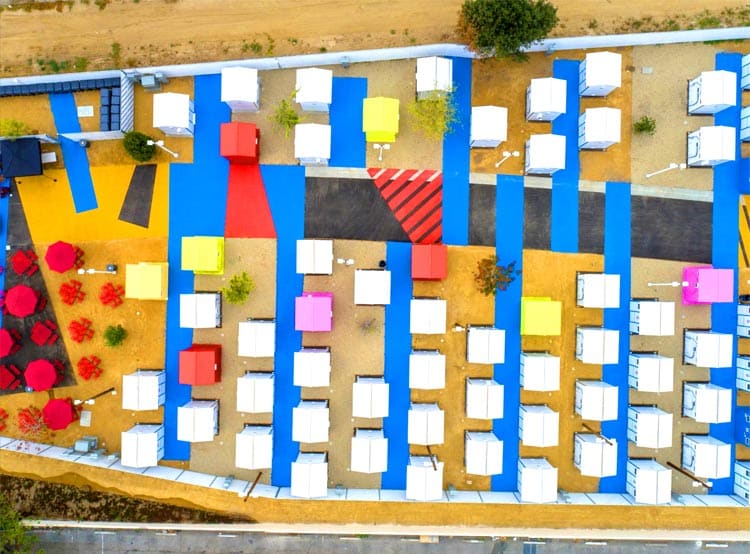
Beyond the benefits to individuals, Kadribegovic said that using tiny houses and reclaimed hotel space, rather than building ambitious new structures, is a more affordable, effective and realistic approach to addressing the homelessness crisis.
“Because of the size of the units, you are able to fit them in nooks and crannies of spaces that you wouldn’t necessarily consider before,” he said. “And so now, all of a sudden, if you look at our city with that lens, you find that there are a number of parcels that were previously overlooked that could now be considered for housing.”
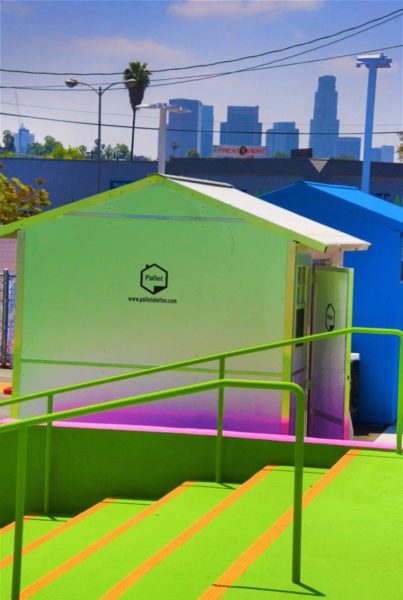
By reclaiming unused land and unprofitable hotels, Kadribegovic believes Los Angeles could house homeless residents more affordably, and with less environmental impact, than would be achieved by building traditional shelters.
Reducing stigma through design
But Kadribegovic’s support for tiny houses and reclaimed hotel rooms goes beyond pragmatism. He also believes that the design opportunities they offer could help address some of the stigma homeless people face.
With all his projects, Kadribegovic is careful to incorporate mindful touches that help the structures feel welcoming. “Our Project Roomkey construction is a roadside motel near the intersection of a couple of freeways,” he said. “So we spent some time and redesigned the parking lot to create green space the residents could enjoy. So when you look out your window, you see green as opposed to seeing cars.”
Taking a mindful approach to the visual impact of these projects can help address some of the social pressures residents may experience. “Design ultimately has value in terms of de-stigmatizing these types of projects,” he said. “With good design, you can really change the public’s opinion about these types of projects and make them be wholesome parts of their community. These are not projects to be stigmatized. These are projects to be embraced.”

